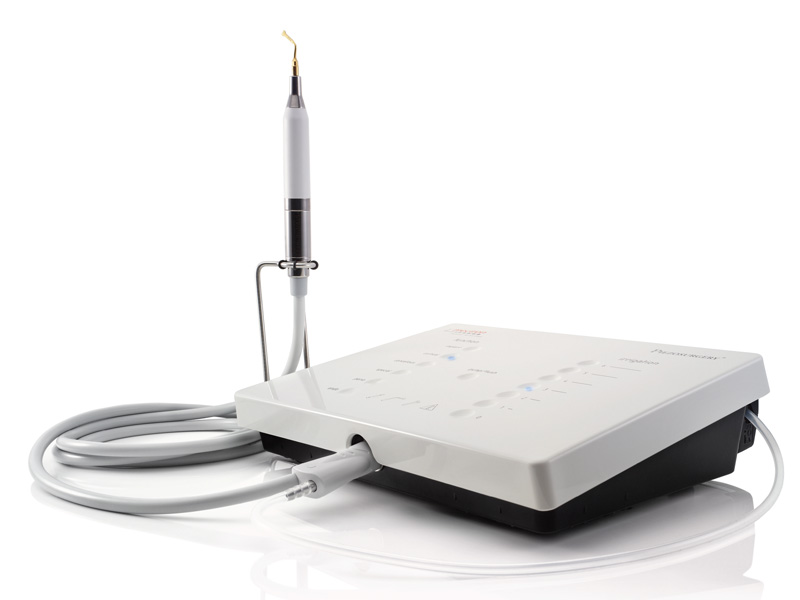 As one of the region’s leading cosmetic rhinoplasty specialists, Dr. Hilinski does offer his patients some of the most cutting-edge technology when it comes to cosmetic nose surgery – and this includes piezo ultrasonic rhinoplasty. In fact, Dr. Hilinski is the first facial plastic surgeon in San Diego to offer piezo ultrasonic rhinoplasty and revision rhinoplasty surgery.
As one of the region’s leading cosmetic rhinoplasty specialists, Dr. Hilinski does offer his patients some of the most cutting-edge technology when it comes to cosmetic nose surgery – and this includes piezo ultrasonic rhinoplasty. In fact, Dr. Hilinski is the first facial plastic surgeon in San Diego to offer piezo ultrasonic rhinoplasty and revision rhinoplasty surgery.
What is Piezo Rhinoplasty?
Piezo rhinoplasty refers to a specific technique that incorporates use of an ultrasonic device to help reshape bone. This is also commonly referred to as piezoelectric rhinoplasty in reference to the actual electrical device. In essence, the ultrasonic piezo device generates high-speed sound waves that vibrate at an extremely high frequency. As this energy is applied directly to the bone, it can be used by the rhinoplasty surgeon to take away bone.
Prior to piezo rhinoplasty, reshaping the nasal bone was done almost exclusively with rasps and chisels (osteotomes). For example, one of the most iconic visuals in the world of cosmetic rhinoplasty is the surgeon sanding down a hump using a metal rasp that is moved back and forth over the bridge of the nose. While rasping is very effective in taking down a bump, it can be somewhat traumatic on the surrounding soft tissues – and can contribute to additional bleeding and unwanted scarring. The same applies to use of chisels, which are sharp edged metal devices used to cut through bone. These are the actual tools used during rhinoplasty when you see a surgeon hammering on the end of the chisel to break the nasal bone. Again, while it accomplishes the goal of breaking the bone so it can be reshaped, the amount of bystander trauma to surrounding tissues can be a detriment.
So what if we could remove bone and/or cut the bone without having to use a rasp or osteotome? Wouldn’t that be nice to minimize bleeding, swelling, and soft tissue trauma? Well, that is precisely why piezo ultrasonic technology was adopted for use in rhinoplasty!
Piezo rhinoplasty takes advantage of the ability of ultrasonic sound waves to selectively and effectively reshape bone – and even some denser forms of cartilage – without causing injury to the overlying skin, adjacent mucosal tissue, or surrounding deeper soft tissue. This ability to selectively target the bone and dense cartilage inside of the nose while avoiding trauma to the other tissue layers is a huge advantage because this translates into less bleeding, minimal bruising, reduced inflammation and shorter healing times for the body. This is also accompanied by less surgical pain experienced during the early recovery period for rhinoplasty patients.
Accuracy and Precision with Piezo
So is piezo rhinoplasty as accurate and precise as traditional rhinoplasty technique? Absolutely! In fact, it is arguably much more accurate to use the piezo device to sculpt the bone and cartilage because it can do so in a more gentle manner. Take, for instance, narrowing of the nasal bone. With piezo rhinoplasty, Dr. Hilinski can remodel and reshape the bone with great precision because the ultrasonic tips are specifically designed for various angles encountered when performing rhinoplasty. When a bone is cut, or broken, with traditional hammer and chisel, it can usually be done with good precision. However, given how the chisel works and how bone responds to being broken, there is always a chance of unwanted breaks in the bone, or splinter fractures. If this occurs, it can detract from an, otherwise, excellent rhinoplasty result. With piezo rhinoplasty, the chance of this type of complication occurring is negligible – making it much more precise.
Piezo Closed Vs Open Rhinoplasty
Although most rhinoplasty surgeons started adopting piezo technology for use in open rhinoplasty surgery, it is now used quite regularly in closed rhinoplasty as well. By virtue of the piezo tool design, it does require slightly more access to insert the device when performing rhinoplasty. Since open rhinoplasty affords the surgeon more visualization and room for instrumentation, piezo was easily adopted for this type of approach. However, now that we have a much better understanding of rhinoplasty anatomy and access points to the nose, piezo can be effectively and predictably used during closed rhinoplasty with very similar success rates to the open approach.
Piezo Rhinoplasty Surgeon
As an expert in cosmetic rhinoplasty and one of San Diego’s best nose job surgeons, Dr. Hilinski is on the forefront of the industry. Therefore, he has studied piezo rhinoplasty quite closely before adopting the technology for his patients. In fact, as noted, Dr. Hilinski is the first plastic surgeon in San Diego to start using piezo for cosmetic rhinoplasty surgery. If your surgeon hasn’t yet adopted piezo as part of their rhinoplasty practice, you should consider a second opinion from someone who does perform ultrasonic rhinoplasty – as the advantages to both patient and surgeon can be quite significant in many cases.
Dr. John Hilinski has either authored or reviewed and approved this content.


